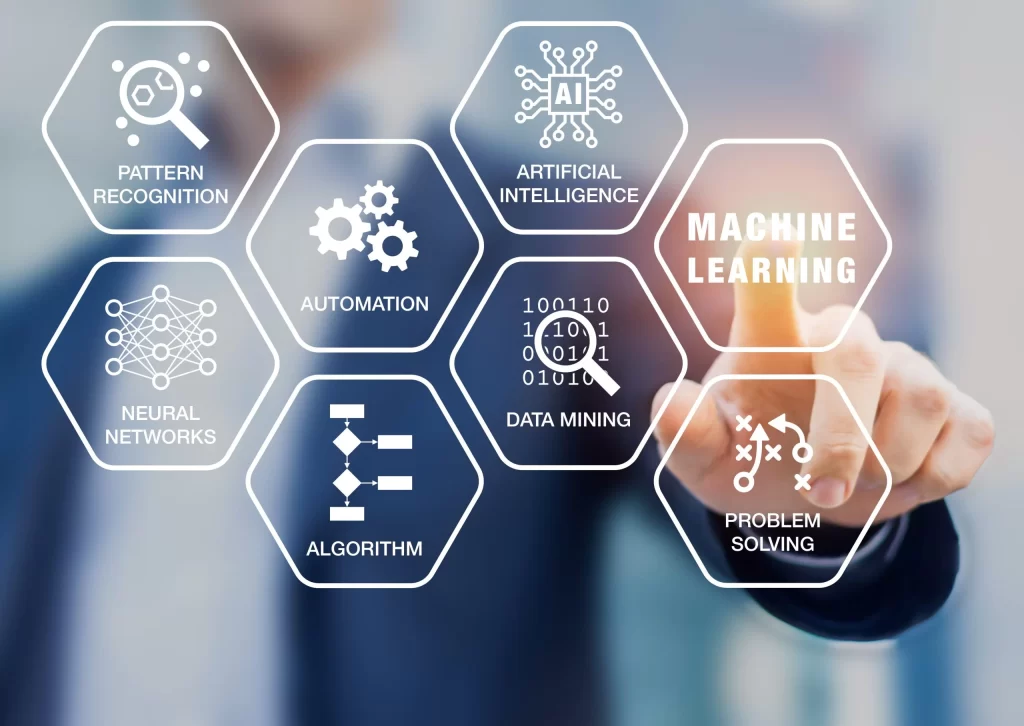Reading time : 5min
Transforming adult learning through AI
In the animal health sector, AI could revolutionize the way professionals continue their education, from e-learning that adapt to their level of knowledge, to virtual reality experiences that allow them to practice in a safe and controlled environment.
Buckle up and get ready to discover how AI is taking adult learning to the next level!
1. AI : An opportunity to create personalized and adaptive learning experiences
Are you tired of sitting through hours of training that doesn’t seem relevant to your role? Have you ever found yourself nodding off during a mandatory e-learning module? Or maybe you’ve felt frustrated by a learning experience that was either too easy or too difficult?
AI will make adaptive and personalized learning experiences possible, offering a solution to the problems of irrelevant and boring training.
Personalized learning experiences will be tailored to the individual learner, taking into account their prior knowledge, learning style, and preferences. AI will use data analytics and machine learning algorithms to identify areas where learners need support and adjust the learning experience accordingly.
For instance, virtual tutors could be added to learning experiences. These virtual tutors will use natural language processing and machine learning algorithms to understand the learner’s questions and provide personalized feedback.

Imagine you’re struggling with a concept in a veterinary surgery course. You ask your virtual tutor for help, and it recognizes that you’re having trouble with a specific step in the procedure. It provides you with a video tutorial that breaks down the step-in detail and gives you personalized feedback on your technique.
The benefits of personalized learning experiences are clear: learners are more engaged, they retain more knowledge, and they’re able to apply what they’ve learned more effectively. They will also be able to save time and resources. Learners will be able to focus on the areas where they need the most support and skip over material they already know.

2. Potential challenges and limitations of AI
While AI has the potential to revolutionize adult learning in the animal health sector, there are also potential challenges and limitations to consider. Some of these include:
- Limited access to technology: Not all learners may have access to the technology needed to engage with AI-powered learning experiences, such as virtual reality (VR) or chatbots. This could create inequality in the learning experience, where some learners have an advantage over others.
- Ethical considerations: AI algorithms need large amounts of data to function, and this data may include personal and sensitive information. There are ethical concerns about how this data is collected, stored, and used.
- Human expertise cannot be replaced: While AI can provide valuable support and feedback, it cannot replace human expertise in the animal health sector. Human experience and judgement are essential for clinical decision-making and diagnosis.
3. What AI cannot replace
While AI can enhance tailor-made learning experiences to industries of the animal health sector, it cannot replace the knowledge and expertise of humans.
For instance, our team provides these valuable skills to all our clients:
- Domain-specific expertise: Our company has specialized knowledge and expertise in the animal health sector, including veterinary medicine, animal science, and pharmaceuticals. This expertise is necessary for developing high-quality learning experiences that accurately represent the latest scientific and clinical advancements.
- Human-centred approach: Our company prioritizes a human-centred approach to learning, which means that we consider the needs, goals, and preferences of the learner throughout the development process. While AI can provide personalized recommendations, it cannot replace the empathy and understanding that our team brings to the table.
- Collaborative development: Our company works closely with industry experts, educators, and learners to develop learning experiences that meet their needs. This collaborative approach involves gathering feedback, iterating on designs, and incorporating diverse perspectives. In fact, we’ve created a Wolf Editorial and Expertise Committee (CREW). AI cannot replace the value of human collaboration and insight.
- Creativity and innovation: Our company thrives on creativity and innovation, which allows us to push the boundaries of what’s possible in the animal health sector. While AI can provide useful tools and resources, it cannot replace the ingenuity and originality of our team.


4. Key take aways : how AI can revolutionize adult learning
- AI-powered learning experiences could provide personalized recommendations, real-time feedback, and immersive simulations that improve learning outcomes.
- However, there are potential challenges and limitations to consider, such as ethical concerns about data collection and use.
- AI can enhance and support learning experiences, but it cannot replace human expertise and judgment.
- Our company specializes in developing innovative learning experiences for the animal health sector, and while AI can enhance and support these experiences, it cannot replace the specialized expertise, human-centered approach, collaborative development, and creativity and innovation that our team brings to the table.
As AI continues to advance and transform the field of adult learning, it’s important to keep these key points in mind to ensure that we develop high-quality, effective, and ethical learning experiences for all learners in the animal health sector.
5. Fun fact : the basis of this article was built with ChatGPT
Finally, know that the evaluation is not only important at the end of a programme, it must be considered before the training! Prior consideration is needed early on in order to set the success criteria for your e-learning and to collect the necessary data in all phases of the programme: beforehand, during and after the training.
It is common to use the Kirkpatrick model by inverting the order of the different levels, by first defining the targeted strategic objectives and breaking them down into expected behaviours, which will then be used to determine the educational objectives.
You now have the key to properly assess the impact of your e-learning training.
